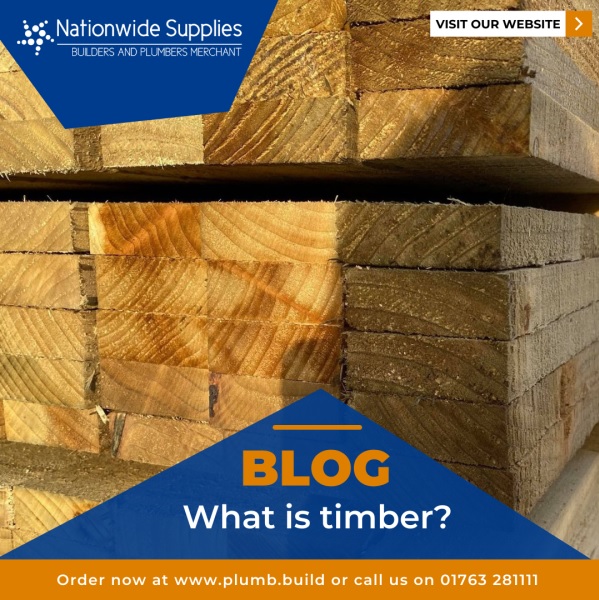Posted: 7th October 2022 | Author: Adam Brown | Category: Timber
Back to news
Timber is a versatile building material used in many different types of construction projects for various purposes. The term timber refers both to the wood used in construction and the trees grown specially to provide that wood. Timber comes from a variety of different trees and can be made into many shapes and sizes.
In addition, not all timber is created the same – there are many different types of timber that are suited for different uses.
The timber world is full of different classifications of timber, which vary in terms of strength, intended use, treatments applied, finish, and more. Let’s take a more in depth look at some of the types of timber available.
Canadian lumber standard (CLS) timber is often the first choice for internal timber structures such as timber framework and partition walls. Usually made of softwoods like fir, spruce or pine, CLS timber is then kiln-dried and treated with pesticides before being finished on all sides to provide rounded edges.
As the name suggests, CLS timber originated in Canada, but it’s widely used in the UK today. Here are some of the reasons why:
CLS timber is available in a range of sizes to suit most projects, and it can even be used outside. If you are going to use CLS timber outside, it’s best to treat it to preserve it against the elements to keep it in good condition for longer.
In the UK and Europe, timber is graded according to its strength. C16 and C24 are the two most common grades of timber, however there are ten other grades. A higher number indicates a stronger grade of wood – therefore C24 timber is stronger than C16 timber. However, it is also more expensive, so it may be better to use C16 timber if C24 timber isn’t required.
Different species of wood grown in different conditions can have varying strengths, so using a grading scale makes it easier to tell which timber is strong enough for the purpose you need. Most types of timber are available in C16 and C24 grades. All timber should be clearly stamped with its grade before it can be used – if you can’t see a grade on your wood, it’s best not to use it.
Planed square edge or planed single edge (PSE) timber is wood that has been planed on one edge to make it smooth and more attractive for use in projects where it’s likely to be seen. You can also get planed all round (PAR) timber, planed both sides (PBS) timber and rough sawn timber, which hasn’t been planed at all.
There are lots of projects where planed timber may be more desirable – such as interior wall panelling, built-in storage or decking – but it’s worth noting that the extra planing will likely be reflected in the cost. However, buying pre-planed timber saves you time working on it, and can result in a more professional finish to your construction project.
Carcassing timber is the term used to describe timber that has been processed specifically for structural applications. This could include stud walls, joists, roof battens, cladding and more – anything that forms part of the ‘carcass’ or ‘skeleton’ of a building.
As carcassing timber has so many uses, it comes in a wide variety of shapes, sizes and strengths. Depending on its use, it may be treated or untreated. CLS is the most common type of carcassing timber – available in grades of C16 and C24.
With concerns over climate change and global warming on the rise, the question of timber’s ustainability is an ongoing debate. Some people believe that deforestation cannot be justified for any cause, whereas others recognise the systems and procedures in place to limit timber production’s impact on the environment.
Sustainable forestry efforts centre around planting just as many, if not more, trees as are cut down for logging. Moreover, the carbon stored in a tree remains in the wood we take from it. That means that, provided the timber doesn’t burn or rot, it’s still storing carbon when it’s part of a construction project. Due to this, the net result is the creation of more carbon storage for a better environment.
Wood is also a renewable resource – far better than things like steel, bricks and plastics. A tree grows to a suitable size in around 25 to 80 years, while other materials take millennia to form. As a natural material, wood also doesn’t pollute rivers or landscapes once it’s disposed of.
Finally, timber is a highly durable material. Wooden structures tend to last for a long time if they aren’t demolished or burned, which means that the timber inside them doesn’t need to be replaced often. In fact, timber structures from as far back as Tudor times are still standing today! Timber is an excellent example of a construction material that doesn’t sacrifice quality for sustainability.
Back to news
The Author: Adam Brown
With a background as a Mechanical Engineer, I started Nationwide Supplies alongside my brother with a vision to modernise what seemed a stuck-in-its-ways industry in the builders merchant sector. Since 2011 it has been my goal to source quality products at the correct prices to be able to offer a saving to customers along with high quality customer service which offers quick delivery and superior technical knowledge in the industry.